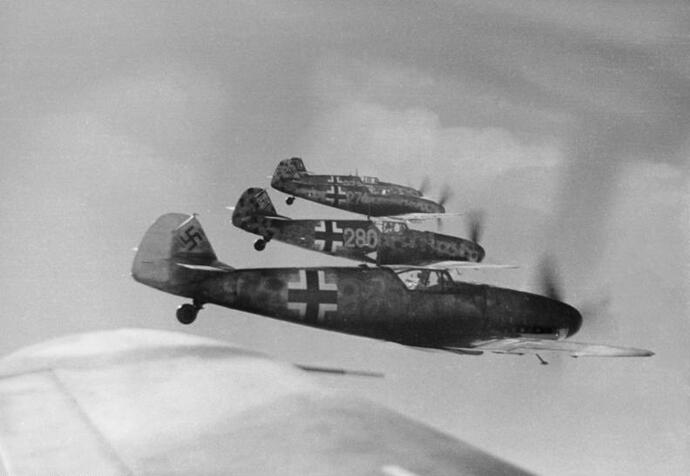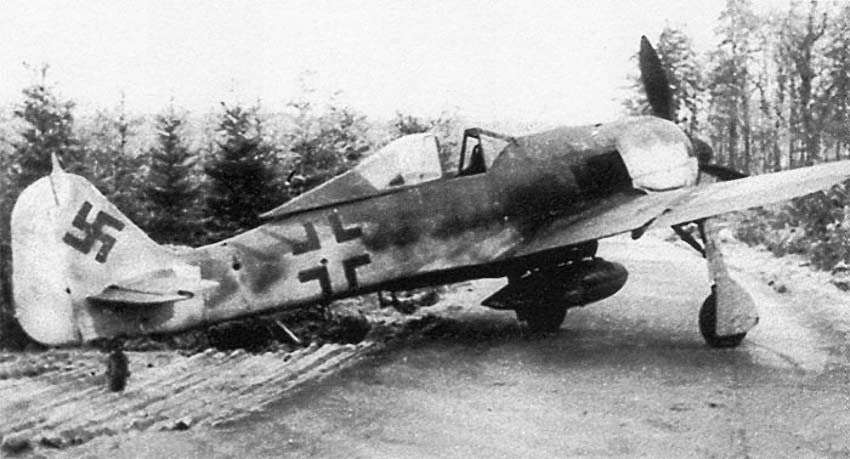Hypothetical question for our aviation experts. You are a pilot in a P-51 Mustang. Which German plane do you fear more, the BF109 or the FW190?
There is a lot of stuff on the net about this, including a Quora question I’ll post a link to, although I haven’t yet read it. I’m by no means an expert on Luftwaffe individual aircraft, but from what I’ve read it seems a lot/most of the Jadgwaffe “Expertin” pilots seemed to fly the Me109. Why? Perhaps because it preceded the FW190 and the pilots got to know the Me109’s strengths and weaknesses and their comfort level was well established? The highest scoring ace pilot (of all time?) was Erich Hartmann who flew on the Eastern Front in a Me109 and was extremely proficient in it. So much so he even hesitated to transition to fly jet fighters although he would eventually fly the Me262…
One opinion from the link above:
The Bf-109 was generally more maneuverable in the horizontal pane, especially the F series. The Fw-190 had higher climb rate, speed and acceleration. It could dive or climb away from opponents weapon parameters and approach from the rear or above, where a slower opponent is unable turn his weapons.
The shorter wings generate less drag and improve roll rate. This is important because in a defensive scenario the pilot is unlikely to out-turn his pursuer, instead uses abrupt changes in flight direction; left to right, up and down, also known as “scissors”. Followed by a smooth evasive drive or climb to acquire the pursuer from a higher perch.
Illustration of the “scissor” maneuver
This made it the better of the two because it was thought better to out do Allied fighters like the Spitfire and Yak through higher speed and climb rate, than through maneuverability; they were already quite agile. Plus German bombers can cruise at altitudes where climb rate advantage is more apparent. However the Bf 109G series equipped with DB605 engines had higher ceiling of 12,000 meters and better high altitude performance than the A series.
Which aircraft is better though does depend on the opposing force. The Fw-190 fares better against low level fighters due to obvious energy advantage. But against opponents with similar or better climb rates like the later Merlin powered Spitfire, Yak-9 and La-7, the Fw-190 is less maneuverable and a heavily armed but otherwise easy target.
BMW 801 D-2 engine which powered the Fw-190 A series
Which aircraft is better though does depend on the opposing force. The Fw-190 fares better against low level fighters due to obvious energy advantage. But against opponents with similar or better climb rates like the later Merlin powered Spitfire, Yak-9 and La-7, the Fw-190 is less maneuverable and a heavily armed but otherwise easy target.
BMW 801 D-2 engine which powered the Fw-190 A series
Against high altitude fighters like the P-51D, P-47D and Lavochkin La-5FN equipped with a specialized supercharger, it actually has a speed disadvantage in addition to being less maneuverable. Thus the Bf-109, which doesn’t depend on advantage of energy as heavily, would fare better. This is partly the reason why top scoring Luftwaffe aces preferred it over the Fw-190.
–David Trapp, former Turbine Engine Specialist
The 190 was a mean airplane. It had an outstanding climb rate and could dive better than Han most aircraft at the time.
It was also very well armed. Because it had great acceleration and a top and speed faster than the FW109 and for the previous reasons cited, it was the better aircraft. It is true that some of the German pilots preferred to continue flying the FW109, this does not mean that the 109 was the superior aircraft. It’s simply meant that these pilots were extraordinarily familiar with the flight characteristics of the 109 and as such were reluctant to give up their aircraft in favor of the new 190.
It is worth noting that from early to mid 1943, moving forward, the attrition rate to the German Air Force was tremendous. The sheer number of planes and pilots and corresponding supplies and raw materials necessary to support an Air Force were made abundantly clear by the variety of allied aircraft coupled with ever present fighter patrols over Europe. To be sure the United States and its allies had great pilots but the fact is we simply overwhelmed the German Air Force with our massive numbers. The point is that the 190 may not have had enough qualified pilots to truly exploit its virtues. Later in the war the Germans were consistently fielding young inexperienced, under trained pilots.
The point is that the 190 may not have had enough qualified pilots to truly exploit its virtues. Later in the war the Germans were consistently fielding young inexperienced, under trained pilots.
Good point, I never thought of that.
Similar issue for the Japanese as the war progressed.
Their best pilots, who were the product of lengthy and excellent training, were steadily wiped out in the first two years of the Pacific War.
Nonetheless, the Japanese persisted for some time with lengthy training, measured in years, producing small numbers of highly trained pilots while the Allies in the Pacific, primarily America, produced much larger numbers of well trained and adequate pilots in months rather than years. It’s a bit like the Soviets producing lots more but somewhat inferior tanks to the Germans, but overwhelming them over time.
Towards the end of the Pacific War Japan had very few highly trained pilots with a lot of combat experience, while their planes had by then become inferior to the much larger number of competently piloted American planes they fought in the last year or two of the war.
Kamikaze attacks were as much an admission of the deficiencies in Japan’s pilot training and aircraft as the mistaken popular notion, in Japan then and more widely since, of determined martyrs.
By late 1944-45 the Japanese didn’t have aircraft or pilots sufficiently skilled to do enough damage on land or sea to stop the American advance. The best they could do was ram ships with planes piloted by Japanese pilots with vastly less skill, training and combat experience than the Japanese pilots who fought in China and later in 1941-42.


